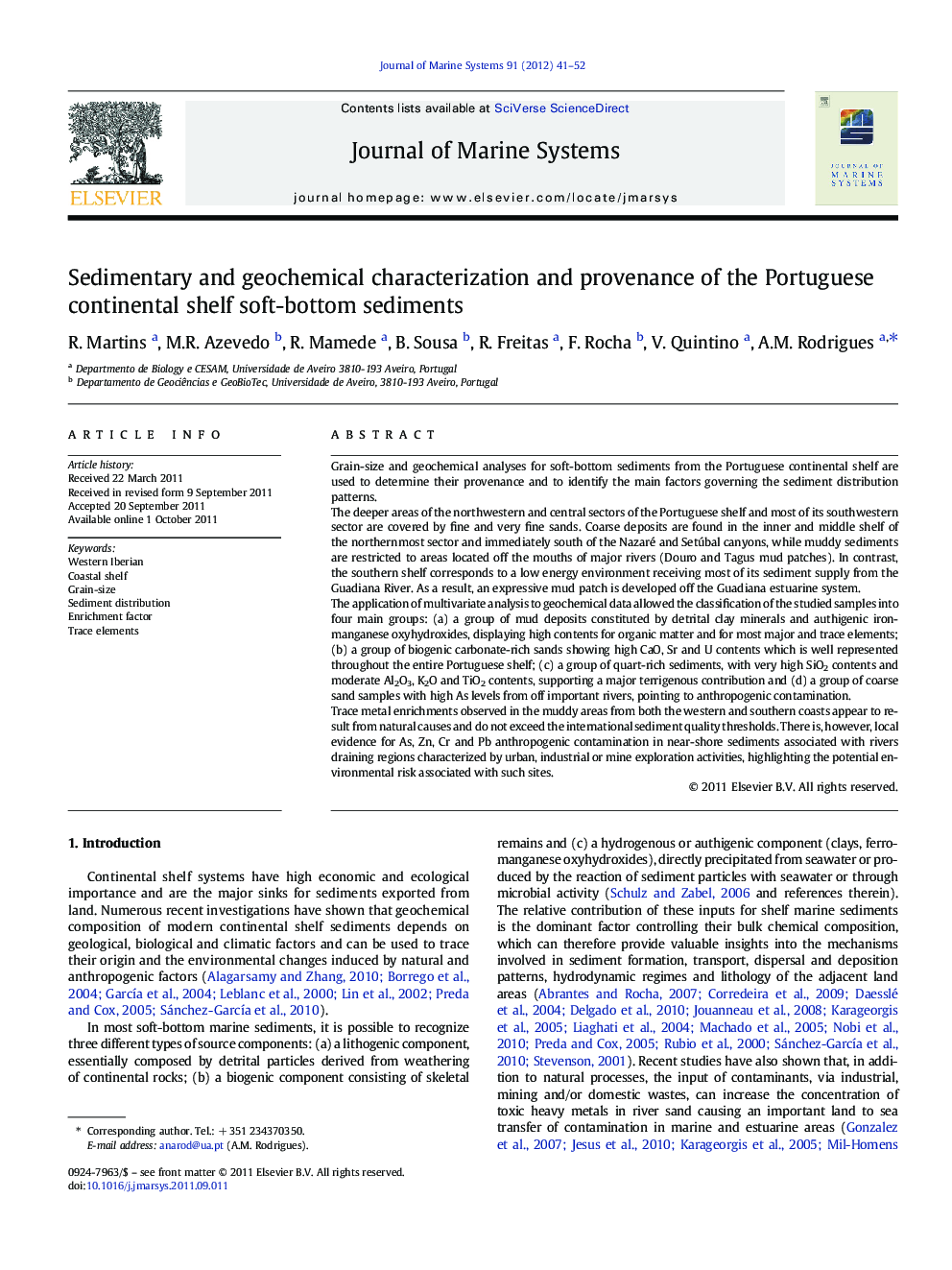| Article ID | Journal | Published Year | Pages | File Type |
|---|---|---|---|---|
| 4548329 | Journal of Marine Systems | 2012 | 12 Pages |
Grain-size and geochemical analyses for soft-bottom sediments from the Portuguese continental shelf are used to determine their provenance and to identify the main factors governing the sediment distribution patterns.The deeper areas of the northwestern and central sectors of the Portuguese shelf and most of its southwestern sector are covered by fine and very fine sands. Coarse deposits are found in the inner and middle shelf of the northernmost sector and immediately south of the Nazaré and Setúbal canyons, while muddy sediments are restricted to areas located off the mouths of major rivers (Douro and Tagus mud patches). In contrast, the southern shelf corresponds to a low energy environment receiving most of its sediment supply from the Guadiana River. As a result, an expressive mud patch is developed off the Guadiana estuarine system.The application of multivariate analysis to geochemical data allowed the classification of the studied samples into four main groups: (a) a group of mud deposits constituted by detrital clay minerals and authigenic iron-manganese oxyhydroxides, displaying high contents for organic matter and for most major and trace elements; (b) a group of biogenic carbonate-rich sands showing high CaO, Sr and U contents which is well represented throughout the entire Portuguese shelf; (c) a group of quart-rich sediments, with very high SiO2 contents and moderate Al2O3, K2O and TiO2 contents, supporting a major terrigenous contribution and (d) a group of coarse sand samples with high As levels from off important rivers, pointing to anthropogenic contamination.Trace metal enrichments observed in the muddy areas from both the western and southern coasts appear to result from natural causes and do not exceed the international sediment quality thresholds. There is, however, local evidence for As, Zn, Cr and Pb anthropogenic contamination in near-shore sediments associated with rivers draining regions characterized by urban, industrial or mine exploration activities, highlighting the potential environmental risk associated with such sites.
► Portuguese shelf sediments are highly heterogeneous in terms of grain size. ► The observed geochemical patterns document detrital, biogenic and authigenic inputs. ► Trace metal enrichments are particularly high in muddy samples. ► Some near-shore sediments show evidence of potential anthropogenic contamination.
